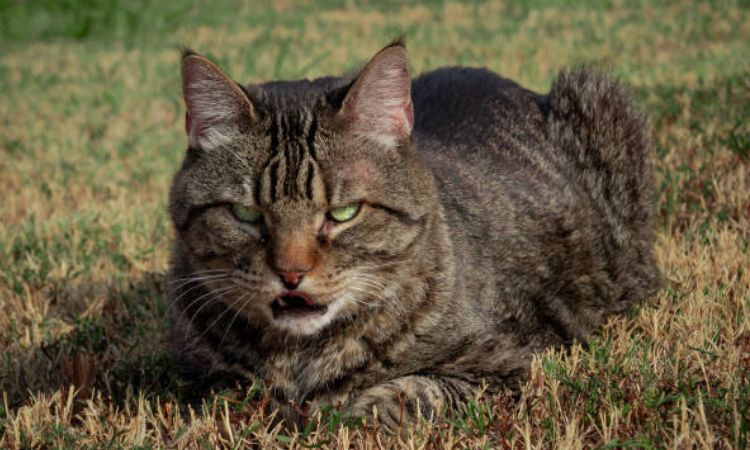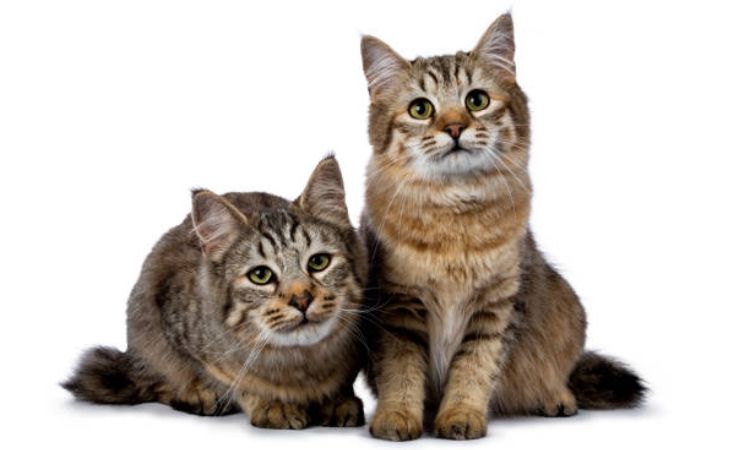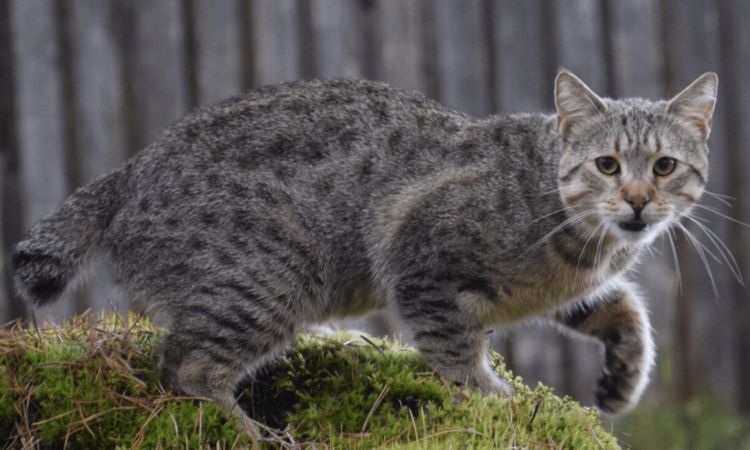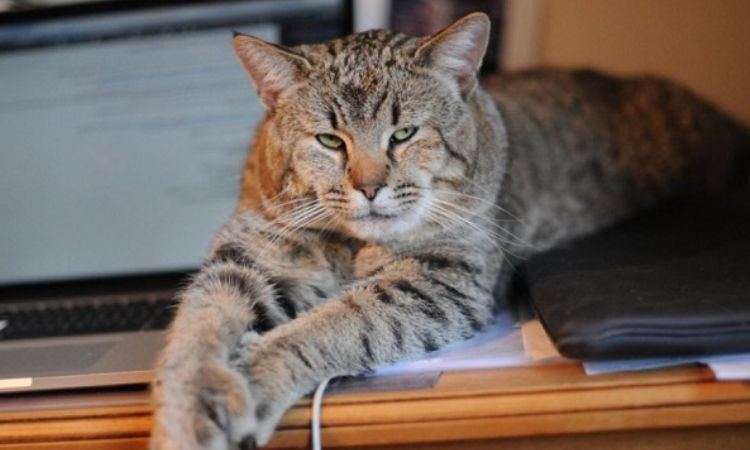Striking bobcat-like in appearance and playful, dog-like in personality, Pixie-Bobs capture the imagination of cat lovers everywhere. These muscular, spotted felines aren’t just eye-catching they’re smart, loyal, and full of energy, making them fascinating companions for families and pet enthusiasts alike.
In this complete guide, we’ll explore everything you need to know about Pixie-Bobs, from their size and colors to personality traits, care needs, and what it takes to bring one into your home.
History and Origin
The Pixie-Bob cat breed originated in Mount Baker, Washington, United States, in the mid-1980s. Breeders in the Pacific Northwest selected naturally occurring, wild-looking domestic cats that resembled North American bobcats to develop a distinct and recognizable breed.
The Pixie-Bob breed was founded by Carol Ann Brewer, who was captivated by unique, spotted, bobtailed cats with polydactyl paws in the Cascade Range. Brewer initiated a structured breeding program to preserve these wild-appearing traits while maintaining a fully domestic genetic profile.

The breed’s namesake, Pixie, was a female kitten born in April 1986 from a mating between Keba—a large, bobtailed, polydactyl male—and a neighbor’s brown-spotted female cat. Pixie displayed the distinctive spotted coat, bobbed tail, and wild appearance that would become the hallmark of the breed. Carol Ann Brewer kept Pixie and used her as the foundation cat to establish the Pixie-Bob breeding program, ultimately shaping the modern Pixie-Bob cat recognized today by TICA and ACFA.
Pixie-Bob Appearance and Size
Size and Weight
Pixie-Bobs are a medium- to large-sized domestic cat breed, known for their muscular, sturdy, and heavy-boned build. Adult males typically weigh between 10 and 17 pounds, while females are slightly smaller, generally ranging from 8 to 14 pounds. Unlike most domestic cats, Pixie-Bobs continue growing for up to four years, contributing to their robust frame and strong presence.
Coat Colors and Patterns
The breed standard recognizes a single primary coat pattern: Brown Spotted Tabby. Colors vary from tawny and light brown to reddish-brown hues, often accentuated with subtle ticking that softens the spots. Pixie-Bobs are available in both shorthair and longhair varieties, with the longhair coat reaching up to 2 inches and featuring a softer, silkier texture. Both coat types require regular grooming to prevent mats and manage shedding.
Distinguishing Physical Traits
- Bobbed Tail: True to the breed’s namesake, Pixie-Bobs have naturally short tails, typically ranging from 2 inches to the hock, giving them a wild, bobcat-like appearance.
- Polydactylism: Many Pixie-Bobs have extra toes, sometimes up to seven per paw, a unique trait officially recognized by the breed standard.
- Head and Ears: The breed’s pear-shaped head is complemented by heavily hooded, triangular eyes that change from blue in kittens to green or gold in adulthood. Their ears often feature lynx tips and prominent ear hair, reinforcing their wild appearance while maintaining domestic charm.

Pixie-Bob Personality and Temperament
Pixie-Bobs are celebrated for their intelligence, social nature, and playful energy, making them one of the most engaging domestic cat breeds. Often described as a “dog in a cat’s body,” they display loyalty and affection toward their human families that is unusual for most cats.
These cats thrive on interaction and are happiest when they are included in daily family activities. They are highly trainable, capable of learning tricks, walking on a leash, and even fetching toys. Their curiosity and cleverness make puzzle feeders and interactive games excellent tools to keep them mentally stimulated.
Pixie-Bobs are naturally sociable, enjoying the company of both people and other pets. They are typically very tolerant of children, provided the kids are gentle and respectful. While they may have hunting instincts, they generally coexist well with other cats and cat-friendly dogs.
Vocalization in Pixie-Bobs is unique; they are not excessively talkative but often communicate through chirps, trills, and soft chatters, reflecting their wild bobcat-like heritage. They are confident and bold but rarely aggressive, making them well-suited for active households.
Pixie-Bob Price and Cost of Ownership
Initial Purchase Price (From a Breeder)
The Pixie-Bob is a rare and highly sought-after breed, which is reflected in its initial purchase price. On average, acquiring a kitten from a reputable breeder can cost between $1,800 and $3,000.
Factors influencing the price include:
- Lineage and Pedigree: Kittens descended from champion show lines or well-documented breeders often command higher prices.
- Show Quality vs. Pet Quality: Cats intended for shows typically cost more than those sold as companion pets.
- Polydactylism: Extra toes are a desirable trait in this breed and may slightly increase the price.
Adoption from a Shelter or Rescue
Although uncommon, Pixie-Bobs can sometimes be found in rescues or shelters. Adoption fees are significantly lower than buying from a breeder, usually ranging from $100 to $500, depending on the organization. These fees often include:
- Initial veterinary care (spaying/neutering, vaccinations, microchipping)
- Health screenings
- Basic supplies for transitioning into a new home
Adopting a Pixie-Bob provides a more affordable option while giving a cat in need a loving home.
Long-Term Costs of Ownership
Owning a Pixie-Bob involves ongoing financial commitments to ensure health, happiness, and longevity:
- Veterinary Care:
- Annual check-ups and vaccinations
- Routine dental care and preventive treatments
- Occasional emergencies or specialized care (e.g., obesity management)
- Food and Supplies:
- High-quality, protein-rich cat food (wet, dry, or combination)
- Treats, toys, scratching posts, and cat trees
- Grooming tools for brushing short or long coats
- Health Considerations:
- Monitoring calorie intake to prevent obesity, as Pixie-Bobs are large, muscular cats
- Regular exercise to maintain fitness and mental stimulation
When budgeting for a Pixie-Bob, potential owners should plan for an annual expense of $500–$1,000 or more, depending on veterinary care, food quality, and lifestyle needs.

Health and Care of the Pixie-Bob
Lifespan and General Health
Pixie-Bobs typically live 13–15 years, with some reaching 16 years when properly cared for. Their overall health is bolstered by the diverse gene pool, reducing the risk of inbreeding-related issues common in other purebred cats.
However, as with all breeds, certain health considerations should be monitored:
- Hypertrophic Cardiomyopathy (HCM): Rare in Pixie-Bobs, but some cases have occurred, especially in crossbred cats. Annual heart screenings with a veterinarian can help detect HCM early.
- Obesity: Their medium-to-large size makes it easy for them to gain excess weight. Maintaining a balanced diet and providing regular exercise is essential to prevent diabetes, arthritis, and other weight-related health problems.
- Dental Disease: Like all cats, Pixie-Bobs are prone to plaque and tartar buildup. Daily tooth brushing and periodic professional cleanings are recommended.
- Other Considerations: Occasional delivery problems (dystocia) and polydactyl-related nail issues may occur, though these are relatively uncommon. Regular checkups and monitoring are advised.
Nutrition
Pixie-Bobs are active cats with muscular, large builds, so they require a diet high in protein and low in carbohydrates. Key points for proper nutrition include:
- Feed age-appropriate commercial cat food (kitten, adult, senior) that meets AAFCO standards.
- Provide measured meals twice daily. Kittens may eat up to four small meals.
- Treats should comprise less than 10% of daily calories.
- Consider puzzle feeders or foraging mats to slow eating and provide mental stimulation.
- Consult your veterinarian for calorie guidance based on your cat’s weight, age, and activity level.
Grooming
The Pixie-Bob has a thick, double coat, which can be either short or long:
- Long-haired: Brush 2–3 times per week to prevent tangles and manage shedding.
- Short-haired: Brush once a week to maintain coat health.
- Their fur may appear slightly coarse but is plush, with long belly hair covering a prominent primordial pouch.
- Skin Care: Occasional overgrooming or skin irritation should prompt a vet visit. Baths are rarely necessary.
Eyes, Ears, and Nails
- Eyes: Usually gold or gooseberry green. Check regularly for redness, discharge, or irritation.
- Ears: Lynx-tipped with tufts of fur; monitor for infection signs such as head shaking, pawing, or odor.
- Nails: Polydactyl cats may have extra toes, requiring careful trimming to prevent ingrown nails or discomfort.
Exercise and Enrichment
Pixie-Bobs are intelligent and active cats that thrive with mental and physical stimulation:
- Interactive toys, cat trees, and climbing structures
- Puzzle feeders and foraging mats
- Daily play sessions (at least two 15-minute sessions)
- Leash training or supervised outdoor exploration
- Fetch and other dog-like interactive games
Regular exercise is vital to maintain healthy weight, strong muscles, and overall well-being.

Socialization and Behavior
Pixie-Bobs are friendly, loyal, and social cats:
- They often follow family members around and enjoy human companionship.
- Instead of meowing, they communicate through chirps, chatters, trills, and headbutts.
- They adapt well to children, other cats, and well-behaved dogs when introductions are gradual.
- Early socialization, proper handling, and training help develop a well-adjusted and confident adult cat.
Veterinary Care
Routine veterinary care is essential to ensure a long, healthy life:
- Annual checkups for overall health and early disease detection
- Vaccinations according to veterinarian recommendations
- Dental cleanings and preventive care
- Heart screenings for HCM in adult cats
- Weight monitoring to prevent obesity
This remarkable feline, the Pixie-Bob, truly delivers the best of both worlds: the exotic, wild appearance of a bobcat paired with the unwavering loyalty and affectionate nature of a domestic cat. We’ve covered their sturdy, medium-to-large size, their defining brown spotted tabby color, their distinctively dog-like personality, and the necessary investment regarding their price. For those ready to welcome an intelligent, trainable, and deeply devoted companion who thrives on family interaction, the Pixie-Bob is an exceptional and unique addition to the home.






